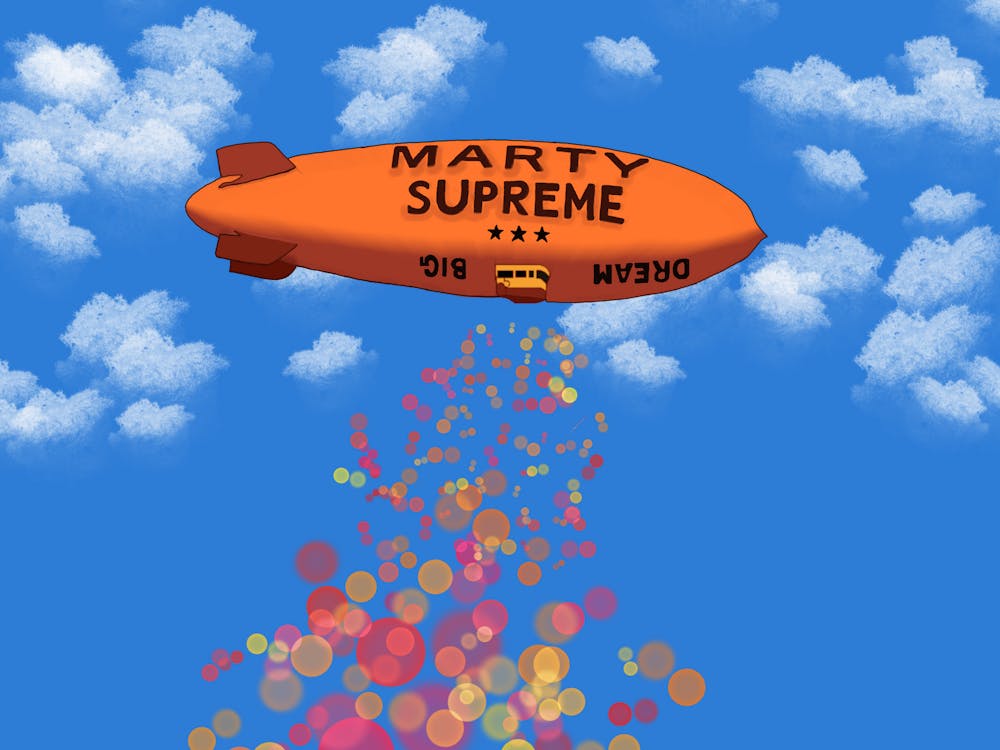Stepping foot onto the second floor of The Fralin Museum of Art, one crosses the threshold between the stress of everyday life and the fluid, expressive world of abstract art.
This art has lived in the “Processing Abstraction” exhibit since its opening in February. Within, expansive abstract paintings assert themselves from wall to wall. These various paintings were created by renowned and stunningly innovative artists from abstract expressionist Joan Mitchell all the way to color field painter Sam Gilliam, who had ties to the Washington Color School, a famous group of abstract artists from the mid-20th century.
Although the paintings vary in context of production and technique, they all share a sense of dynamism, a range of swirling, striping and splattering colors barely contained by canvas. Within this world of color and texture, one has unbounded potential to explore and learn.
Violette Mercier, Fralin student docent and second-year College student, said her experience with the gallery had given her a new entry point for connecting with art. Sheila Eaton Isham’s “Huan Dispersion Wind with Water” — a 1973 acrylic on canvas featuring vibrant hues of pink, red, purple and green — was particularly compelling for Mercier, who was prompted to consider tactical questions like how the painting would feel when she was moving through the exhibit.
“It was the first time I've ever had that kind of activity within artwork,” Mercier said. “Usually in museums, you’re supposed to be silent. There's no [actual] reflecting on the work and saying what you think about it.”
Mercier noted how this process of deep reflection led to a discovery that all the senses can play a role in observing abstract art.
Mercier is not the only student trying new methods of observation in the gallery — Jade Devriendt, Fralin student docent and third-year College student, said that she has seen kids react differently to abstraction too, interpreting paintings as anything from storms to tie-dyed pools.
“Some people might think it's calm and others thought it was really chaotic,” Devriendt said. “Then, this one kid actually said he felt it was like both.”
No clear humanlike figures exist within the paintings at the “Processing Abstraction” exhibit — the paintings are instead meant to encourage viewers to find meaning in them, an idea Emily Lazaro, manager of docent and teacher programs at The Fralin and class of 2008 alumna, expanded upon.
“It doesn't matter if it's a third grader or a college student,” Lazaro said. “People projecting their experiences, their ideas, the knowledge that they hold or the shapes or forms they recognize.”
Beyond the visual exploration of the abstract art itself, The Fralin affords a valuable technical learning opportunity in “Processing Abstraction,” one that has allowed students to learn about painting conservation.
Since mid-September, Hirshhorn Museum Conservator Scott Nolley has been coming into the exhibit to perform live conservation work on two Joan Mitchell paintings, “Untitled” and “Neige.”
The painting was dirty when it first arrived to be displayed but needed to be cleaned in time for the grand opening, which led to a unique opportunity to combine art and education.
“It's important for an educational institution with a kind of cross-disciplinary mandate and the willingness to educate on all levels to sort of take these opportunities when you get them and use them to their best quality,” Nolley said.
Conservation of paintings is often a job that happens behind closed doors rather than something that is accessible to the public, Nolley said. In the case of “Processing Abstraction,” Nolley’s conservation is representative of how museumgoers are encouraged to engage with abstract art both visually and technically, holistically learning how to observe.
When it comes to visual observation and analysis of abstract art, really listening to one’s inner thoughts and feelings is important, according to Lazaro and Nolley.
“You get out of abstract and impressionist artwork what you bring to it,” Nolley said. “It's really a reflecting pool, for feeling, for perception and energy.”
To try observing abstract art in this way, Lazaro recommends coming to the museum for a guided tour or a visit with friends. Her advice for approaching this exhibition is to come with a sense of flexibility and curiosity to see what unfolds in conversation.
The Fralin Museum of Art will have “Processing Abstraction” on display until Dec. 31, and tours can be flexibly booked on their website, allowing for an opportunity to explore these diversely made, vibrant paintings close to home.







